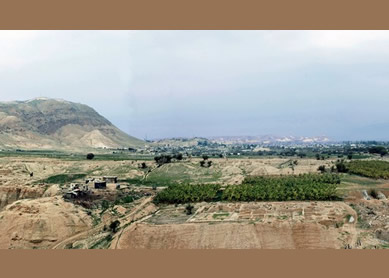In antiquity, travel by sea was often faster and more enjoyable than by land—provided one survived the journey.
How common was travel by sea for people who were not sailors?
In the ancient world, sea travel was an established, relatively common way of transportation between port cities, especially across the Mediterranean. Although passenger vessels did not exist, travelers could purchase passage on virtually any ship carrying goods. Large ships could accommodate hundreds of travelers. To reserve passage, one inquired among people in harbor areas. Travelers often booked with a “master of the ship” (magister navis), who oversaw its business affairs. Passengers supplied their own food and personal supplies. Most ships had a galley with an available cooking hearth. Since passenger cabins were extremely rare, most travelers slept in the open or in tentlike shelters on deck.
Ships did not sail on fixed schedules. Their departures depended entirely on favorable winds, weather, and omens. Since sailors were notoriously superstitious, journeys often began and concluded with sacrifice. They were also often postponed at ill omens and avoided on days associated with bad fortune. After his own perilous journey, Synesius of Cyrene advised: “never trust yourself to the sea, or at least, if you really must, let it not be at the end of the month” (Letters 4.39).
During optimal seasons (May–September), ships could cover well over one hundred miles a day, especially if traveling southward or eastward. During winter, sea travel was far rarer, riskier, and extraordinary. On the Mediterranean, for example, sea travel was avoided between November and March (Vegetius, De re militari 4.39; Pliny, Natural History 2.122). No matter the direction or season, sudden storms quickly thwarted the best-laid plans.
Were shipwrecks common?
Alciphron voices a widespread opinion from antiquity: “the sea is cruel and sea travel is reckless” (Letters 1.3.1). Ancient historical writings attest to the prevalence of shipwrecks, with over a thousand shipwreck sites known today across the Mediterranean. Some scholars estimate that nearly one-fifth of sea journeys encountered grave danger. Octavian, for instance, suffered shipwreck when young, later his fleet’s destruction, and still later two ships’ demise at sea (Suetonius, Aug. 8.1, 16.2, 17.3). The Apostle Paul boasts of three shipwreck experiences—as well as a day adrift—prior to his journey to Rome (2Cor 11:25). When asked about the safest boats, an ancient critic responded: “those which are safely moored” (Athenaeus, Deipnosophistae 8.18).
Although ancient accounts of sea storms borrowed language from earlier literature (like Homer’s Odyssey),this does not negate their historicity. Both historical and fictional writings used shared rhetorical strategies to inform as well as to inspire and entertain. As such, sea journey stories often reflected moral lessons on pride (Polybius, Hist. 1.37), greed (Juvenal, Sat. 12.17–82), wealth (Phaedrus, Fables 4.23), friendship (Lucian, Tox. 19–21), or facing crises (Lucian, Peregr. 43–44). A prominent New Testament example is the sea journey of
Bibliography
- Parker, A. J. Ancient Shipwrecks of the Mediterranean and the Roman Provinces. British Archaeological Reports International Series 580. Oxford: Tempus Raparatum: 1992.
- Rapske, Brian M. “Acts, Travel, and Shipwreck.” Pages 1–47 in The Book of Acts in Its Graeco-Roman Setting. Vol. 2 of The Book of Acts in Its First Century Setting. Edited by David W. J. Gill and Conrad Gempf. Grand Rapids: Eerdmans, 1994.
- Casson, Lionel. Ships and Seafaring in Ancient Times. Austin: University of Texas, 1994.



